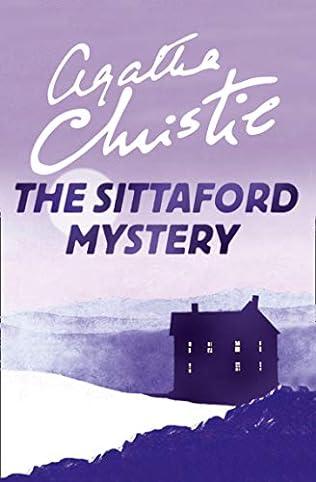A review of The Sittaford Mystery by Agatha Christie – 240201
Christie’s The Sittaford Mystery, originally published in 1931 and also known as Murder at Hazelmoor, sits outside of her Poirot and Miss Marple canon, and features an enterprising, high-spirited female sleuth, Emily Trefusis, who is not above using her feminine charms to get what she wants. She is motivated to unravel the mystery as her fiancé, James Pearson, has been accused of the murder of Captain Trevelyan, hit over the head in his temporary accommodation in Exhampton.
There is a distinctly Holmesian feel to the novel and, in particular, echoes of The Hound of the Baskervilles, with its setting in the wilds of Dartmoor and an escaped prisoner from Princetown, to boot. Continuing the Conan Doyle theme, spiritualism, in the form of a game of table turning aka Ouija which is organised by Mrs Willetts, the mysterious new tenant of Trevelyan’s Sittaford House, sets off the mystery when a message is tapped out informing the assembled guests that Trevelyan has been murdered at 5.25. Despite the snowy conditions, Major Burnaby, rushes out to make the perilous journey to see what has happened to his friend. And lo, the spirits spoke the truth. Preparations for a second session of table turning hastens the denouement and the revelation of the culprit.
There are really two mysteries to the story; who killed Trevelyan and why and who are the Willetts and why, having supposedly come from South Africa, have they taken a large house in the middle of nowhere in the depths of winter? Christie’s skill is weaving these two plotlines into a single story and keeping the reader believing until the very end that they are interconnected. The story comes with a whole shoal of red herrings, but her trawl net is showing some need of repair as some wriggle free and are not satisfactorily explained at the end, particularly the reference to Rycroft’s familial ties with the Derings. On the other hand, the doubts over the identity and trade of the mysterious Mr Duke are handled amusingly and well.
The story’s biggest weakness is the identity of the culprit and their motivation. I can accept an author who decides not to play fair with the reader, although second guessing the sleuth is part of the fun of reading this genre, but a feeling of inferiority, always coming second best, barely foreshadowed in the narrative, and a need for money, – £5,000 is paltry compared with the £20,000 each that the beneficiaries of Trevelyan’s will will receive – seem highly inadequate reasons to commit murder most foul.
Part of the problem is Christie’s feeble characterisation. We know little of the murder victim, save that he was a misogynist and parsimonious, and precious little about the inner workings of the culprit’s mind. Had a little bit time been spent on these aspects, perhaps the resolution would not have felt such a let-down.
Echoing The Mystery of the Blue Train, Emily has to make a choice between her hapless fiancé who is weak-minded and whose ill-luck landed him in a situation where circumstantially he seems to have committed murder and Charles Enderby, an energetic, thrusting journalist whose scoops on the Sittaford case ensure a comfortable future for him. Of course, Emily lets her heart rule her head.
For once, the police, in the form of Inspector Narracott, are not bumbling idiots, but in their own quiet way make progress on the cases and work well with Emily to reveal the culprit. A pair of missing boots hold the key to the identity of the culprit in what was a highly entertaining and undemanding read. I was left, though, with the feeling that it could have been so much better.
This post first appeared on Windowthroughtime | A Wry View Of Life For The World-weary, please read the originial post: here

